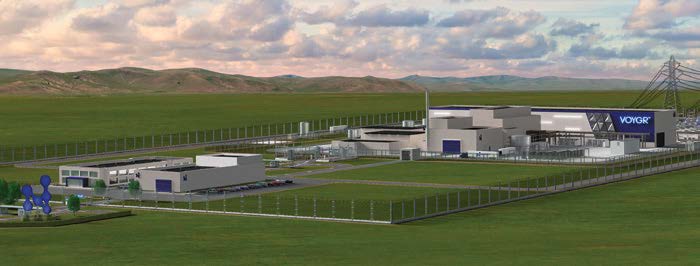Colorado Utility Looking at Adding Nuclear Power to Fleet

A volunteer advisory group told the utility that serves Colorado’s second-largest city that it should look at adding a small nuclear reactor for additional power generation.
Colorado Springs Utilities (CSU) said it is reviewing the recommendation from the Utility Policy Advisory Committee (UPAC). That committee, which is not affiliated with the utility, in June of last year began researching the feasibility of nuclear energy for CSU. The volunteer group looked at current technology for small modular reactors (SMRs), along with regulatory, permitting, and environmental issues for a nuclear power project. The independent committee also looked at potential costs for CSU to add nuclear power to its portfolio.
State lawmakers in the current legislative session have discussed whether nuclear power would qualify as “clean energy” in Colorado. A recently introduced bill, House Bill 25-1040—”Nuclear Energy as Clean Energy”—on Feb. 20 passed on second reading in the statehouse.
Another site floated for a possible nuclear power plant is Pueblo in the southern part of the state. Xcel Energy, the state’s largest electric utility, as part of its phase-out of coal-fired generation is expected to retire the 857-MWE Unit 3 of its Comanche Generating Station by 2031. The utility retired the 383-MW Unit 1 in 2022, and the similar Unit 2 is set to be closed this year.
Xcel operates two nuclear power plants in its headquarters state of Minnesota.
SMRs Offer ScalabilityKate Danner, chairperson for UPAC, told Colorado Springs television station KRDO, “We definitely think [adding nuclear] is something that needs to be on the radar of Colorado Springs Utilities. One of the advantages of those is that you can build onto [an SMR], so you can start with maybe like 50 megawatts [of output] and then add on different [SMRs] as your capacity needs increase.”
The utility has overhauled its power generation fleet in recent years. CSU brought the 175-MW Pike Solar project online in December 2023. The group permanently closed the long-running, coal-fired 208-MW Martin Drake power plant in 2022. CSU also plans to shutter its last coal-fired plant, the 207-MW Ray Nixon facility, by the end of the decade.
The utility also has plans to add more wind, solar, and battery storage to its portfolio.

UPAC in its report to CSU listed examples of companies involved in the SMR sector, and estimated costs of such projects, including for construction. Those ranged from $12.9 billion for NuScale, an Oregon-based company considered among the leaders of U.S. companies in the SMR space; $10.7 billion for X-energy, a Maryland-based nuclear engineering group; and $7.4 billion for TerraPower, which broke ground last year on a nuclear power project in neighboring Wyoming. TerraPower, based in Washington state, was founded by investors including Microsoft co-founder Bill Gates.
Danner noted that the timeline for an SMR project could be as along as decade. The UPAC group also noted that Utah Associated Municipal Power Systems (UAMPS) in 2023 canceled a $9 billion SMR project that had been discussed for several years. Investors backed away from the project as costs continued to rise.
Danner said CSU could work on power purchase agreements or other partnerships with Colorado utilities such as Xcel, Black Hills Energy, the Tri-State Generation and Transmission membership cooperative, or Nebraska Public Power, which operates the 835-MW Cooper Nuclear Station.
Mark Stutz, a spokesperson for Tri-State, recently told POWER, “Tri-State supports House Bill 25-1040. To meet Colorado’s greenhouse gas reduction goals, adding this firm, baseload resource to the state’s ‘clean energy resource’ definition encourages the continued develop of advanced nuclear generation technology as a viable resource option for utilities in the coming decade.”
Colorado has no operating nuclear power plants. The 330-MW Fort St. Vrain facility, which opened in 1979, was closed a decade later. It remains the state’s first and only nuclear power station. Fort St. Vrain today is home to a 716-MW natural gas-fired power plant owned by Xcel.
—Darrell Proctor is senior editor for POWER.
powermag






